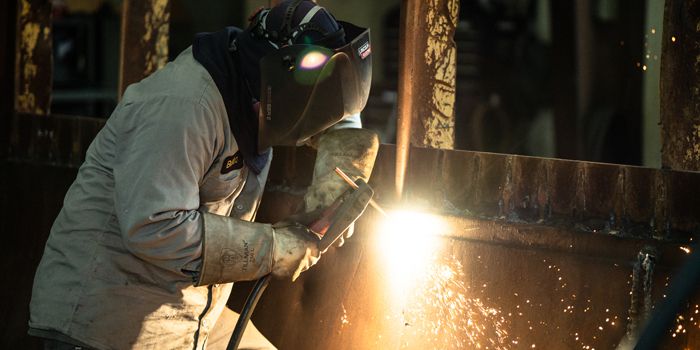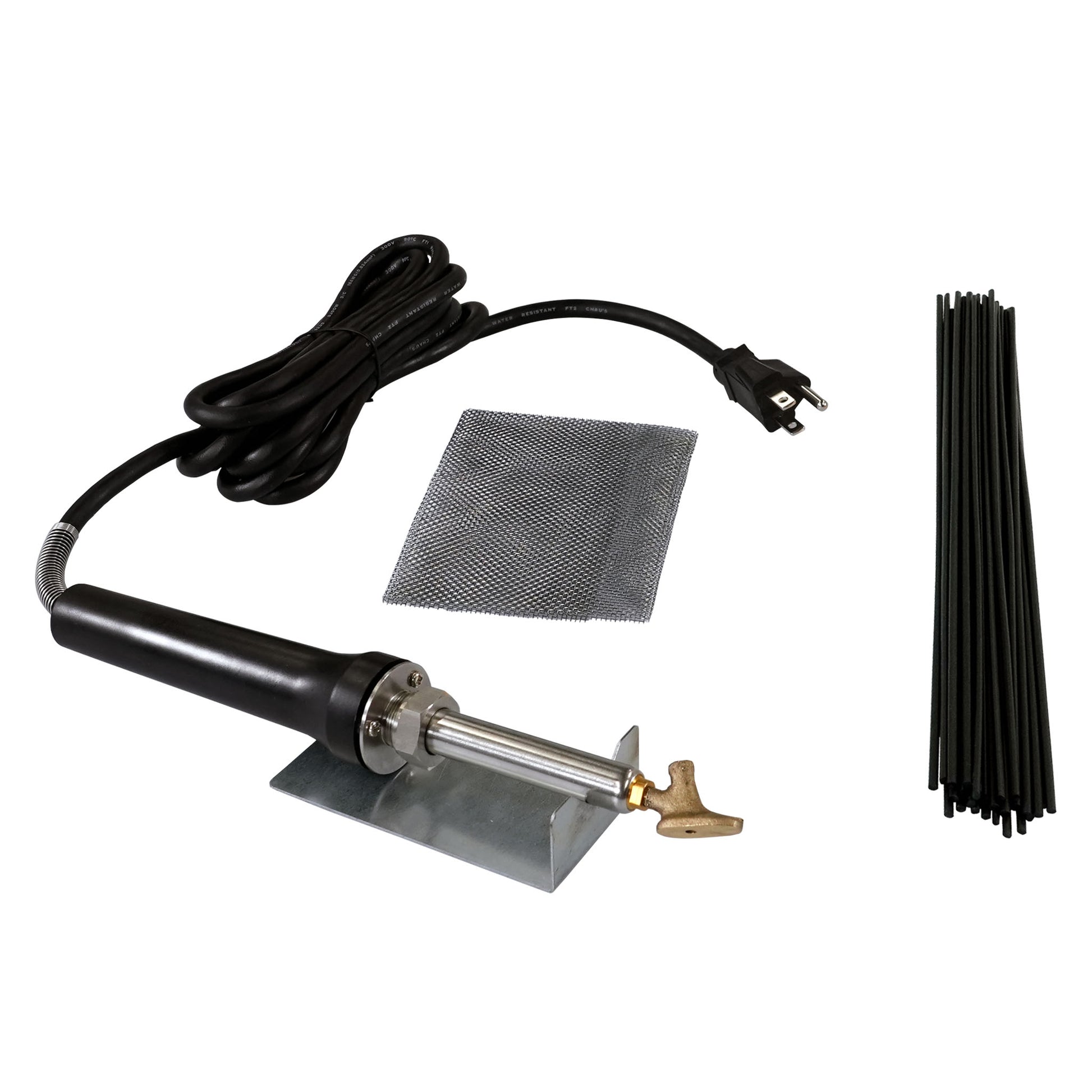Typical Welding Repair Work Issues and How to Address Them Properly
Welding repairs commonly come across a variety of concerns that can threaten the integrity of the final item. Usual problems include insufficient penetration, porosity, and misalignment, to name a few. Each defect presents distinct obstacles that call for particular strategies for resolution. Comprehending these issues is important for welders aiming to boost their outcomes and abilities. This discussion will check out these typical welding fixing concerns and reliable approaches to address them.
Poor Infiltration
Insufficient infiltration happens when the weld metal falls short to fully fuse with the base material, leading to weak joints and potential structural failures. This concern usually originates from insufficient heat input, wrong electrode angle, or inappropriate welding speed. Welders might come across poor infiltration because of a miscalculation of the needed criteria for a certain material thickness or type. Furthermore, contamination on the base product's surface area can prevent reliable bonding, intensifying the trouble. To resolve insufficient infiltration, welders ought to ensure suitable settings on their equipment and preserve a clean work surface. Routine evaluation of welds is suggested to determine any kind of deficiencies early, permitting timely improvements and the avoidance of endangered architectural integrity in bonded assemblies.
Porosity
Porosity is an usual problem in bonded joints that shows up as small gas bubbles caught within the weld metal. This issue can jeopardize the integrity of the weld, causing minimized stamina and potential failing under stress. Montana Mobile Welding and Repair Welding. Porosity generally emerges from contamination, moisture, or incorrect welding methods, which allow gases to get away into the liquified weld pool. To deal with porosity, welders should assure appropriate surface preparation, maintain a clean functioning environment, and make use of ideal welding specifications. In addition, selecting the ideal filler product and protecting gas can alleviate gas entrapment. Regular evaluation and screening of welds can help recognize porosity early, guaranteeing timely rehabilitative actions are taken, therefore preserving the top quality and dependability of the welded framework
Misalignment
Misalignment in welding can emerge from numerous variables, including improper setup and thermal growth. Comprehending the root triggers is crucial for efficient resolution. Numerous correction strategies are offered to realign elements and ensure structural stability.
Reasons of Imbalance
Welding imbalance frequently comes from a range of underlying issues that can compromise architectural stability. One main reason is incorrect fit-up of components before welding, which can result in voids and unequal surfaces. Variants in thermal expansion throughout the welding process can likewise result in distortion, particularly if the products being joined have different coefficients of expansion. Furthermore, inadequate fixturing and clamping may stop working to hold parts firmly in place, causing activity throughout welding. Improperly conserved equipment, including welding equipments and devices, may present inconsistencies in the weld bead, further adding to misalignment. Lastly, operator mistake, originating from not enough training or experience, can also play a substantial duty in developing misaligned welds.
Improvement Techniques Offered
Resolving misalignment successfully calls for a combination of corrective methods tailored to the details concerns available. One usual approach is making use of jigs or fixtures to hold parts in the appropriate position during welding, ensuring constant positioning. Additionally, preheating the products can help in reducing distortion and improve fit-up. For significant imbalance, mechanical realignment methods, such as utilizing hydraulic jacks or clamps, can be employed to fix the placement before welding. Post-weld warmth treatment may likewise be needed to soothe stresses brought on by imbalance. Lastly, careful assessment and modification during the setup phase can protect against imbalance concerns from becoming substantial troubles, advertising a smoother welding process and enhancing general architectural integrity.
Distortion
Distortion is an usual obstacle in welding that can arise from different aspects, including uneven heating and air conditioning. Understanding the root causes of distortion is vital for applying effective prevention techniques. Addressing this concern not only improves structural stability yet likewise boosts the total top quality of the weld.
Reasons for Distortion
When subjected to the intense warm of welding, materials typically undertake adjustments that can bring about distortion. This phenomenon mostly develops from thermal growth and contraction during the welding procedure. As the weld location warms up, the material broadens; upon air conditioning, it acquires, which can develop interior anxieties. In enhancement, irregular heating throughout a workpiece can aggravate these tensions, leading to warping or flexing. The kind of material also plays a considerable role; steels with varying thermal conductivity and coefficients of expansion might respond differently, causing uncertain distortions. Bad joint design and poor fixturing can add to imbalance throughout welding, raising the probability of distortion. Recognizing these causes is essential for efficient welding fixing and avoidance techniques.
Prevention Techniques
Reliable avoidance methods for distortion throughout welding focus on managing heat input and ensuring proper joint style. Keeping a regular heat input aids to lessen thermal growth and contraction, which can lead to distortion. Making use of strategies such as pre-heating the workpiece can additionally lower the temperature level gradient, advertising consistent heating. Additionally, picking appropriate joint styles, such as T-joints or lap joints, can improve stability and lower tension focus. Applying proper fixturing to safeguard the workpieces in position additionally aids in maintaining alignment during the welding process. Ultimately, staggered welding sequences can disperse warm extra uniformly, protecting against localized distortion. By using these strategies, welders can considerably decrease the possibility of distortion and improve the overall high quality of their welds.
Cracking
Fracturing is a common problem experienced in welding fixings, typically arising from different variables such as inappropriate cooling rates, material choice, or insufficient joint preparation. The occurrence of fractures can significantly compromise the integrity of the weld, bring about possible failings during operation. To resolve this problem, welders need to first analyze the origin causes, ensuring that products are compatible and suitably selected for the particular application. Additionally, controlling the air conditioning rate throughout the welding process is crucial; rapid cooling can induce anxiety and bring about breaking. Proper joint style and preparation also add to reducing the danger. Implementing these methods can enhance weld high quality and toughness, inevitably reducing the probability of fracturing in finished weldments.

Incomplete Fusion
A considerable issue in welding repairs is incomplete combination, which happens when the weld steel does not properly bond with the base product or previous weld passes - Montana Mobile Welding and Repair Fabrication. This problem can cause weaknesses in the joint, possibly compromising the stability of the welded structure. Factors adding to insufficient combination consist of not enough warm input, inappropriate welding strategy, and contamination of the surfaces being joined. To address this concern efficiently, welders ought to assure appropriate pre-weld cleansing and surface prep work, as well as readjust their welding specifications to achieve sufficient penetration and blend. Normal examination during the welding procedure can also help determine incomplete fusion early, enabling timely restorative steps to improve the total quality of the weld
Overheating
While welding repair services can improve architectural honesty, overheating offers a significant difficulty that can bring about material destruction. Excessive heat during welding can change the mechanical properties of metals, causing decreased toughness, increased brittleness, and warping. This sensation is especially crucial in high-stress applications where structural dependability is critical. Recognizing overheating can involve aesthetic evaluations for staining or distortion, along with checking temperature level during the welding procedure. To alleviate the dangers connected with overheating, welders should employ ideal strategies, such as controlling warm input, readjusting travel rate, and using suitable filler products. Additionally, applying pre- and post-weld warmth treatments can aid bring back product residential or commercial properties and improve the total quality of the repair service, making sure lasting performance and security.
Regularly Asked Inquiries
What Are the Common Indications of a Welding Issue?

How Can I Test My Welds for Quality?
To check welds for high quality, one can make use of aesthetic examinations, ultrasonic testing, and radiographic approaches. Each strategy assures architectural stability, recognizes problems, and validates adherence to defined standards, ultimately improving the reliability of the bonded joints.
What Safety Preventative Measures Should I Take While Welding?
When welding, one ought to focus on security by wearing suitable individual protective devices, making sure correct air flow, safeguarding flammable materials away, maintaining a clean work area, and understanding environments to stop mishaps and injuries.
Can I Fix a Weld Without Renovating the Entire Joint?
Repairing a weld without redoing the entire joint is feasible, depending on the damages (Belgrade Welding). Methods such as grinding, including filler material, or using a welding procedure can successfully attend to specific imperfections while preserving the bordering framework
What Tools Are Essential for Reliable Welding Repair Works?
Crucial devices for efficient welding repair services consist of a welding equipment, wire brush, mill, safety gear, clamps, and filler products. Each tool plays a crucial duty in guaranteeing top quality and security throughout the repair process. Porosity generally develops from contamination, moisture, or inappropriate welding techniques, which allow gases to run away right into the molten weld pool. Inadequately kept devices, consisting of welding makers and devices, might introduce disparities in the weld bead, more adding to misalignment. When subjected to the extreme heat of welding, materials usually undergo modifications that can lead to distortion. Splitting is a common concern run into Welding in welding fixings, commonly resulting from various factors such as inappropriate air conditioning rates, material option, or inadequate joint preparation. A significant problem in welding fixings is incomplete fusion, which happens when the weld steel does not sufficiently bond with the base product or previous weld passes.